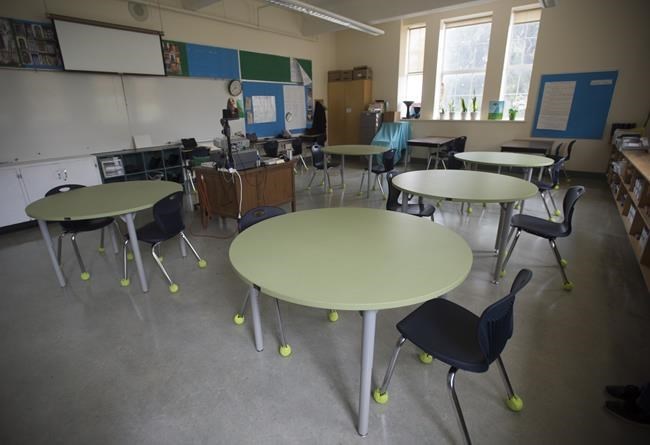Catherine Monias can't wait for the day she sees the buses pull up outside her office and the kids from her remote Manitoba First Nation stream back into the hallways following months of their schools being forced closed by COVID-19.
But it will be slightly different for the children from the Garden Hill First Nation, a fly-in community about 600 kilometres northeast of Winnipeg. Monias said education leaders have had to make one of the toughest decisions since the pandemic began: all students will be repeating their grade in the coming school year.
"It's been rough," said Monias, the Indigenous community's education director.
"This year, with the full lockdown, we feel like we didn't accomplish the grade level that they should be in for the next school year."
Educators across the country are making plans to have students return to classes full time next fall. Many parents are worried what more than a year of disrupted schooling has meant for their children.
Experts say kids' social and emotional needs and patience with academic achievements will be paramount when classroom doors reopen.
"They have just lived through something that is unprecedented," said Tracy Vaillancourt, an education professor at the University of Ottawa, who specializes in research on children's mental health.
"They are going to need a bit more care and attention than they have in the past."
Vaillancourt is working with others on a report about the pandemic's effects on children. The team recently warned the Ontario government that "we are on the cusp of a generational catastrophe."
Kids have been in and out of classrooms as waves of infection caused school shutdowns. Many have moved to online or remote classes, but that’s not possible everywhere, and even that option is not always ideal.
Back in Garden Hill, Monias knows well how the families of about 1,200 students struggled when the elementary and high school first were closed in March 2020.
She is raising three school-aged grandchildren following the death of her son.
Many of her grandchildren's classmates didn’t have access to laptops, tablets or smartphones. Monias researched the cost of getting laptops to kids that needed them. It would have been more than $1.2 million.
Even for children who did have the technology, the internet bandwidth in the community is too weak to broadcast classes successfully.
The First Nation's students went back to classes last fall, but that ended soon after as infection rates surged. The military flew in to help get spread of the virus under control and the schools were turned into isolation centres.
"These last 15 months have been harrowing," Monias said.
Teachers handed out educational packages door to door, but Monias said it became clear that if they wanted the kids to have their best foot forward by graduation, they needed to hold them back.
"I want to see my people prosper and be in good health and my community to prosper."
Vaillancourt said she has not heard of any other schools making the same choice, but added that Garden Hill's situation is unique and leaders there know what's best for those students.
Educators for decades have tended not to have students repeat a grade, because it's felt that can create stigma for the child in the classroom later on, she said.
What's of utmost importance right now, she said, is giving children stability and supporting their mental well-being. That is unlikely to be achieved if they stay in the same grade, she suggested.
"If we focus on their social and emotional needs first, and get them well and healthy and ready to learn, they are going to catch up pretty quickly.”
Laurie French, president of the Canadian School Boards Association, said a one-size-fits-all strategy won’t work in most cases. She doesn't expect to see many other schools following Garden Hill's lead.
"We need to consider each student's situation ... and what is the right choice for them," said French, who added she disagrees with those who say the school year has been a write off.
She encourages parents to talk with teachers and school boards if they are worried.
Boards also need to work with public health partners, French said. All plans needs to be geared to meet the needs of kids in a specific community.
The pandemic has underscored disparities in education for children who are marginalized, living in racialized communities or whose schools can't afford to purchase computers or tablets, she said.
"The gap has widened during this."
Schools also need to look at what changes during the pandemic have worked, French suggested.
Some students have thrived learning online and classes that wouldn't have been an option were available.
"Before we rush back to normal, let's really think about what normal we really want to rush back to."
This report by The Canadian Press was first published May 27, 2021.
Kelly Geraldine Malone, The Canadian Press



